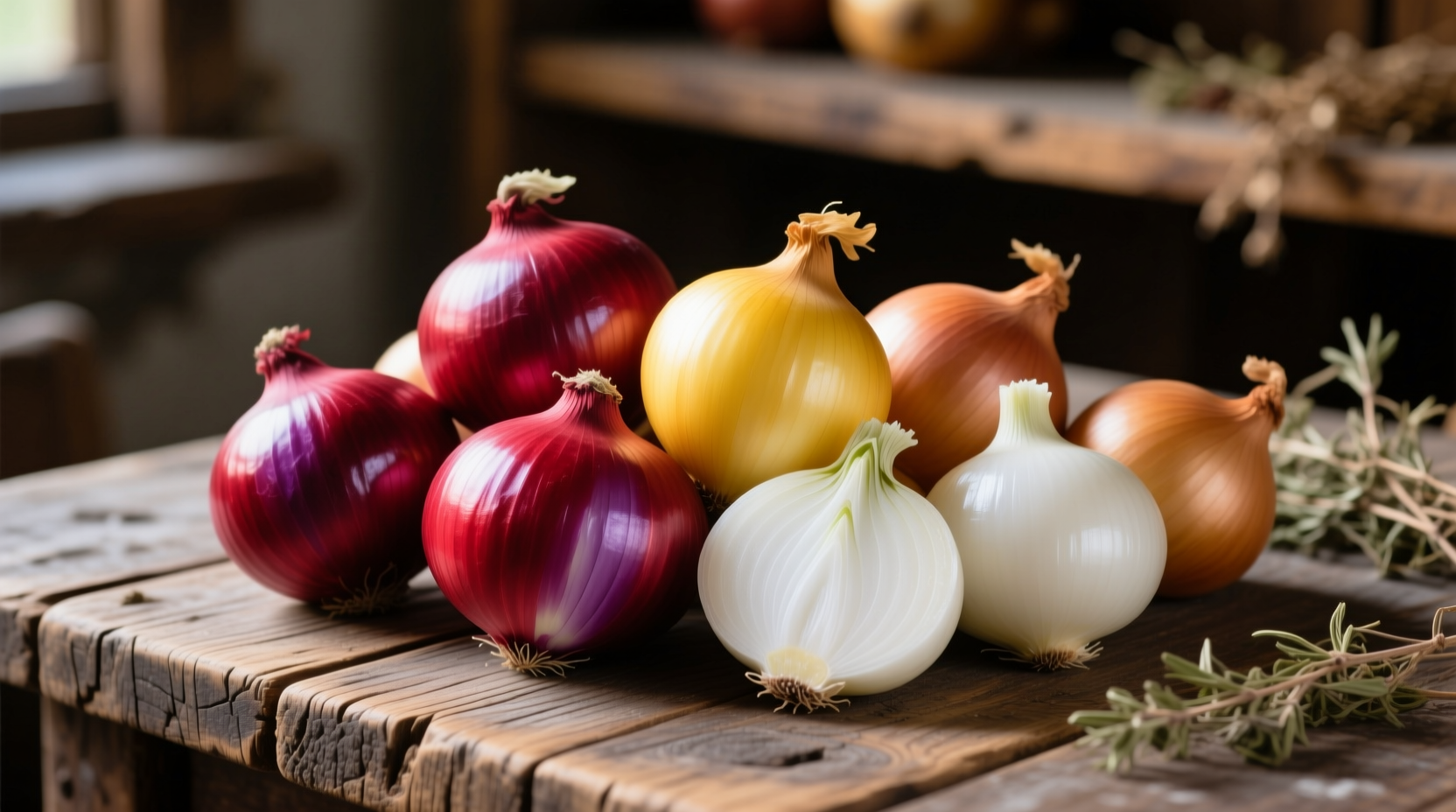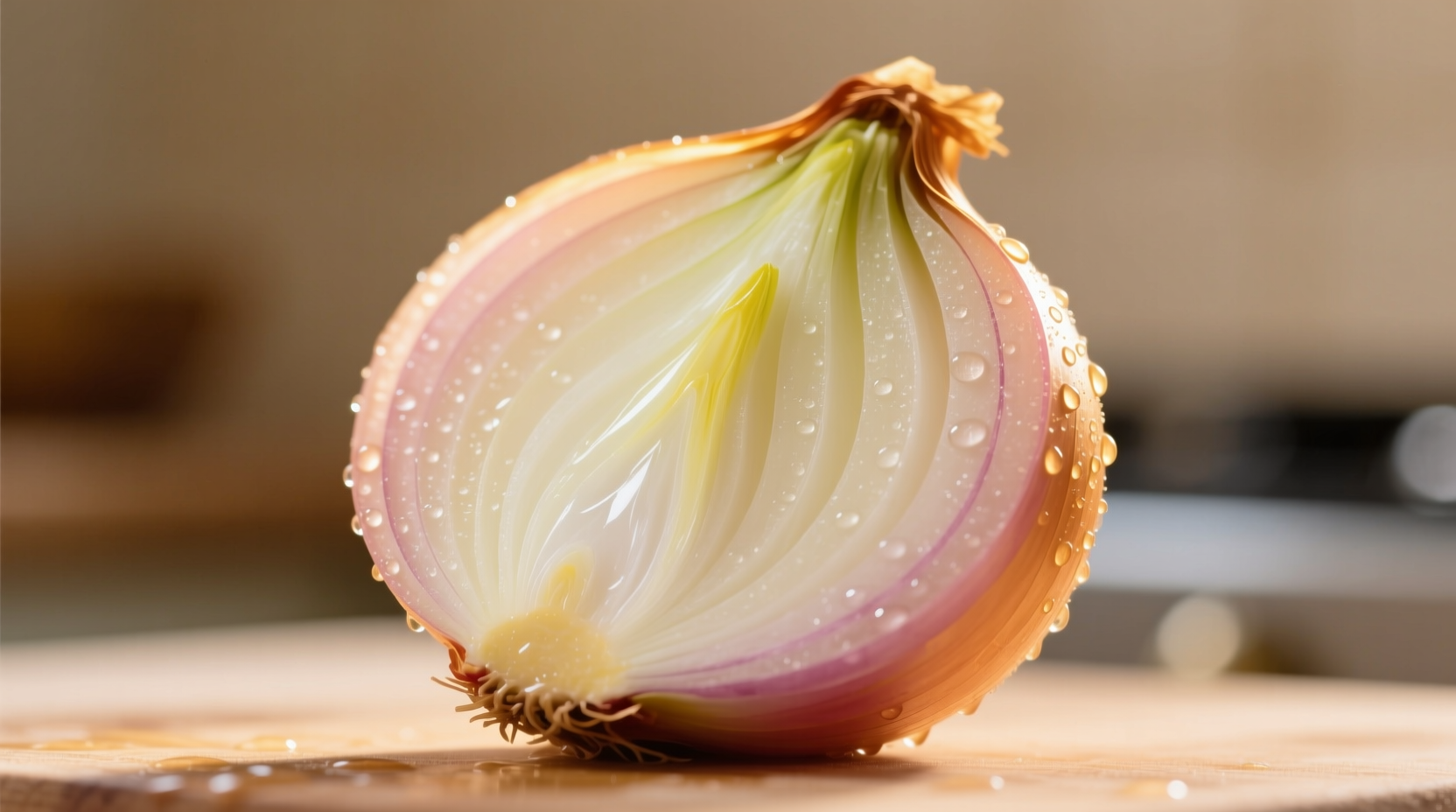Onion colors directly indicate flavor profiles and culinary uses: yellow onions offer balanced sweetness for cooking, red onions provide vibrant color and mild bite for raw applications, while white onions deliver sharp pungency ideal for salsas and Mexican cuisine. Each color variation contains different sulfur compounds affecting taste, storage life, and nutritional benefits.
Ever stood in the produce aisle wondering which onion color to choose? Understanding onion color varieties isn't just about appearance—it's your secret weapon for building better flavor in every dish. As someone who's documented spice markets across 25 countries, I've seen how professional chefs and home cooks worldwide leverage onion color to transform ordinary meals into extraordinary culinary experiences.
Decoding Onion Color Varieties
Onion colors aren't random—they're nature's labeling system indicating specific chemical compositions. The pigments responsible for color also influence flavor compounds, storage capabilities, and culinary applications. Let's break down what each color tells you about your onion.
| Onion Color | Flavor Profile | Best Culinary Uses | Storage Duration |
|---|---|---|---|
| Yellow/Brown | Sweet when cooked, pungent raw | Soups, stews, caramelizing, roasting | 3-4 months |
| Red/Purple | Mild, slightly sweet, crisp texture | Salads, salsas, pickling, garnishes | 2-3 months |
| White | Sharp, clean bite, less sweetness | Salsas, Mexican cuisine, raw applications | 1-2 months |
| Shallots | Delicate, subtle garlic notes | Vinaigrettes, sauces, fine dining | 1 month |
Why Onion Color Matters in Your Cooking
The distinctive colors come from anthocyanins (in red onions) and flavonoids (in yellow and white varieties). These compounds do more than provide visual appeal—they directly impact how onions behave when cooked and how they interact with other ingredients.
Yellow onions contain higher sulfur compounds that transform into sweet flavor molecules when heated. This makes them the undisputed champion for caramelizing—those golden-brown strands in French onion soup? Always yellow onions. When raw, their sharper bite works well in dishes where you want onion flavor to stand out.
Red onions get their purple hue from anthocyanins, powerful antioxidants also found in blueberries. These pigments create a milder raw flavor profile with subtle sweetness. When cooked, red onions can turn an unappetizing blue-gray unless you add acid like vinegar or citrus to stabilize the color. Their crisp texture holds up beautifully in salads and sandwiches.
White onions contain fewer sugars and more pungent sulfur compounds, giving them that characteristic sharp bite perfect for fresh salsas. Their clean flavor doesn't overpower other ingredients, making them the preferred choice in authentic Mexican cuisine. White onions also have higher water content, which helps create that signature juicy texture in fresh pico de gallo.

Practical Applications: Choosing by Color
Understanding onion color helps you make smarter choices based on your cooking method and desired outcome. Here's how to leverage color for better results:
When Raw Applications Matter Most
For salads, sandwiches, and fresh salsas where onion flavor stands prominent:
- Choose red onions for vibrant color and mild bite in salads and sandwiches
- Opt for white onions in salsas and ceviche where clean, sharp flavor is essential
- Use yellow onions sparingly raw when you want pronounced onion flavor
For Cooking and Caramelizing
When heat transforms onion chemistry:
- Yellow onions create the deepest caramelization for French onion soup and gravy bases
- Red onions work well in quick sautés but may discolor without acid
- White onions maintain texture better in stir-fries and quick-cooked dishes
Nutritional Differences by Color
While all onions provide vitamin C, fiber, and beneficial sulfur compounds, color variations offer distinct nutritional advantages:
- Red onions contain 2-3 times more anthocyanins than yellow varieties, providing enhanced antioxidant benefits according to USDA Agricultural Research Service studies
- Yellow onions offer higher quercetin content, particularly when cooked, which may support cardiovascular health as documented in the Journal of Agricultural and Food Chemistry
- White onions provide slightly more allicin precursors, compounds associated with immune support
Storage Secrets by Color
Onion color directly impacts storage life due to varying moisture and sugar content:
- Yellow onions last longest (3-4 months) in cool, dark, well-ventilated spaces
- Red onions maintain quality for 2-3 months but may sprout faster than yellow varieties
- White onions have highest moisture content, making them most perishable (1-2 months)
- Never refrigerate whole onions—except for sweet varieties like Vidalias
Common Misconceptions About Onion Colors
Several myths persist about onion colors that can lead to cooking mistakes:
- Myth: Red onions are always hotter than yellow onions
Reality: Heat depends more on growing conditions than color—onions grown in sulfur-rich soil develop more pungency regardless of variety - Myth: You can substitute any onion color in equal amounts
Reality: Different water and sugar contents mean volume substitutions often fail—use ¾ cup chopped white onion for every 1 cup yellow onion in recipes - Myth: Purple onions lose all nutritional value when cooked
Reality: While anthocyanins decrease with heat, cooking actually increases bioavailability of other beneficial compounds according to research from the University of Guelph
Professional Chef Tips for Maximizing Onion Color Benefits
From years of documenting culinary practices worldwide, here are techniques professional chefs use to leverage onion colors:
- For vibrant red onion salads: soak sliced onions in ice water for 10 minutes to reduce sharpness while maintaining crisp texture
- When caramelizing yellow onions: add a pinch of baking soda to accelerate the Maillard reaction (but don't overdo it or they'll turn mushy)
- To prevent red onions from turning blue when cooked: add lemon juice or vinegar early in the cooking process
- For restaurant-quality onion rings: use sweet yellow onions like Vidalias for maximum crispness and minimal oil absorption
Seasonal Availability by Color
Understanding when different onion colors peak helps you select the best quality:
- Yellow onions: available year-round with peak harvest August-October
- Red onions: best June-September with California varieties dominating summer markets
- White onions: primarily available April-September, with Texas and California being major producers
- Specialty varieties: shallots (August-November), sweet onions like Vidalias (April-August)











 浙公网安备
33010002000092号
浙公网安备
33010002000092号 浙B2-20120091-4
浙B2-20120091-4